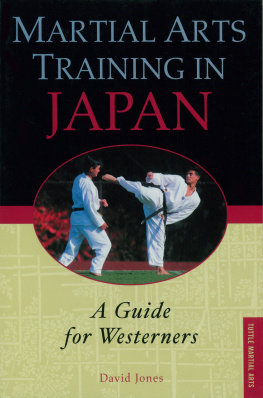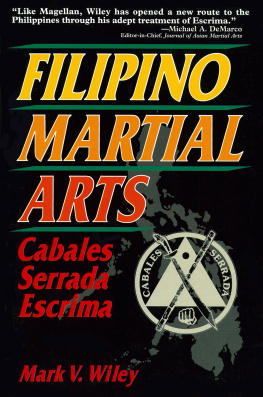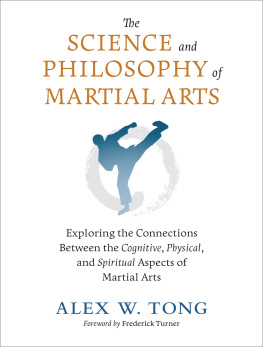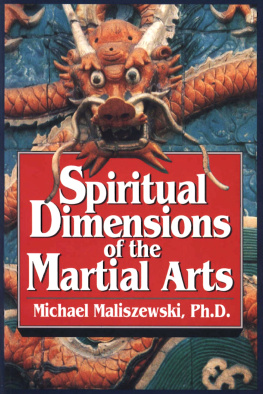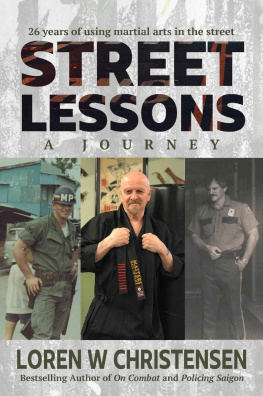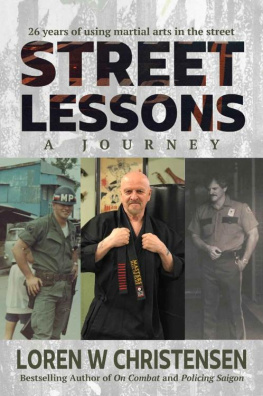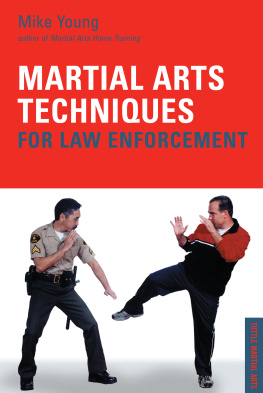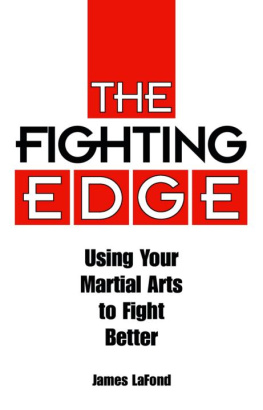Disclaimer
Please note that the authors and publisher of this book are not responsible in any manner whatsoever for any injury that may result from practicing the techniques and/or following the instructions given within. Since the physical activities described herein may be too strenuous in nature for some readers to engage in safely, it is essential that a physician be consulted prior to training.
All Rights Reserved
No part of this publication, including illustrations, may be reproduced or utilized in any form or by any means, electronic or mechanical, including photocopying, recording, or by any information storage and retrieval system (beyond that copying permitted by sections 107 and 108 of the US Copyright Law and except by reviewers for the public press), without written permission from Via Media Publishing Company.
Warning:
Any unauthorized act in relation to a copyright work may result in both a civil claim for damages and criminal prosecution.
Copyright 2016
by Via Media Publishing Company
941 Calle Mejia #822 Santa Fe, NM 87501 USA E-mail:
All articles in this anthology were originally published in the Journal of Asian Martial Arts.
Listed according to the table of contents for this anthology:
Friman, H.R. & Rick Polland, (1994), Vol. 3, No. 4, pp. 46-51
Richard Friman, H.R. (1998), Vol. 7, No. 3, pp. 10-23
Levitas, A. (2000), Vol. 9, No. 1, pp. 34-55
Nunberg, N. (2001), Vol. 10, No. 4, pp. 76-87
Nunberg, N. (2002), Vol. 11, No. 1, pp. 68-79
Romn, F.R. and Garca, C.G. (2010), Vol. 19, No. 2, pp. 46-71
Romn, F.R. (2011), Vol. 21, No. 1, pp. 40-55
Hobart, P. (2011), Vol. 21, No. 1, pp. 72-81
Book and cover design by Via Media Publishing Company
Edited by Michael A. DeMarco, M.A.
Cover illustration
Photograph courtesy of Francisco Javier Rodrguez Romn.
ISBN: 978-1-893765-27-6
ISBN-13: 978-1-893765-78-8 eBook
www.viamediapublishing.com
contents
Preface
by Michael DeMarco, M.A.
CHAPTERS
by H. Richard Friman, Ph.D. and Rick Polland, B.A.
by H. Richard Friman, Ph.D.
by Alex Levitas
by Noah Nunberg, J.D.
by Noah Nunberg, J.D.
by F. Rodrguez Romn, Ph.D. and C. Gutirrez Garca, Ph.D.
by Francisco J. Rodrguez Romn, B.A.
by Peter Hobart, J.D.
preface
Criminals, police, military forces, and civilians practice martial arts which often utilize weapons. One major difference is weather or not the weapons are handled according to legal guidelines. This special anthology includes insightful writings that focus on aspects of martial arts as they are practiced and used by different people on both sides of the law.
Certainly most practicing a martial art are doing so primarily for their health or as a sport. Perhaps they have an interest in self-defense, but often their practice methods are not realistic enough to be truely effective. For this reason, Friman and Pollands first chapter deals with the concern for realistic methods for training martial artists, particularly those involved in law enforcement.
In the following chapter on The Art of Regulation, Dr. Friman argues that the martial arts are more likely to face government regulation when authorities perceive them as posing challenges to the states monopoly over the means to create and maintain order. In the quest for maintaining order, Alex Levitas shows in the next chapter that martial arts weapons are widely used by police forces in many countries. Applications are illustrated by photographs credited to noted law enforcement pioneers in this area, including Terrence Winston, Robert Fabrey, Roy Bedard, and Robert Koga.
Two chapters by Noah Nunberg examine the practical legal aspects of using martial arts techniques while training in the martial arts studio or in defending oneself on the street. Assault and battery are examined in depth as to potential criminal and civil liabilities that may arise. Specific cases and hypothetical situations are referred to for reference and insight.
Dr. Romn and Dr. Garca write about the scope and legal framework of penitentiary self-defense. This kind of self-defense is defined by the unique characteristics of a confinement context and a very specific regulation aimed at preserving the integrity of prisoners and penitentiary staff, as well as prison facilities. A technical section is also included.
In the system known as Comprehensive Penitentiary Defense, Dr. Romn presents techniques which professionals in this field must master and know how to apply when they face any hazardous situation. These techniques go from peaceful conflict resolution, assertiveness, or body language to joint control, immobilization, or pressures.
In the face of regulating martial art practice and weapons useage, the final chapter by Peter Hobart inspects the right to bear arms. Existing criminal laws and recent weapons bans have made it increasingly problematic for legitimate martial artists to own, use, and transport the tools of their trade. This survey of existing state and national weapons laws is intended to help make martial arts practitioners aware of these legal issues.
All who read this bookwhether involved in professions of law enforcement, military branches, or as a martial arts instructor or practitionerwill find each chapter of vital importance. We hope you will enjoy this anthology as it provides excellent coverage of aspects of the martial arts that are rarely discussed but have profound practicality.
Michael A. DeMarco, Publisher
Santa Fe, New Mexico
June 2016
Striving for Realism:
Concerns Common to Martial Arts and Law Enforcement Training
by H. Richard Friman, Ph.D. and Rick Polland, B.A.

Figure 1: Shows Tsunemori Kaminoda (Hanshi and Menkyo Kaidan) using the jutte against Mr. Osato, who holds a katana. Notice the foot pin as Kaminoda takes Osato off-balance. These skills grew up in a time when fighting techniques either worked or died as proven on the battlefield. They are simple and direct and maximize user safety as well as possible options. Today the concepts are the same but practice against the sword would not work well in the countrys law enforcement community. Photo courtesy of T. Kaminoda.
Martial arts instructors and law enforcement trainers each seek to provide practitioners with the skills to respond to events beyond their control. The serious martial artist trains with the attitude that the techniques practiced are efficient and capable of vanquishing the opponent if executed properly. The law enforcement officer is encouraged to train with the attitude that he or she will have to use skills in physically violent encounters with little time to decide upon the appropriate level of force to use. The challenge for martial arts instructors and police trainers alike is to provide realism in training. Meeting this challenge, however, has tended towards the exception rather than the rule.
Serious students are immediately challenged to find quality training while seeking to avoid the array of artificial, superficial, or even phoney instruction being hawked as martial arts. Street-wise law enforcement officers often avoid or minimize their Defensive Tactics and Physical Techniques training, questioning the credibility of the techniques being taught. Improper training and poor transmission of skills wastes the time of the student, thus creating a crisis in credibility marked with frustration. The consequences for law enforcement are greater: community liability, danger to bystanders, and risks to the safety of officers and perpetrators.
Next page

